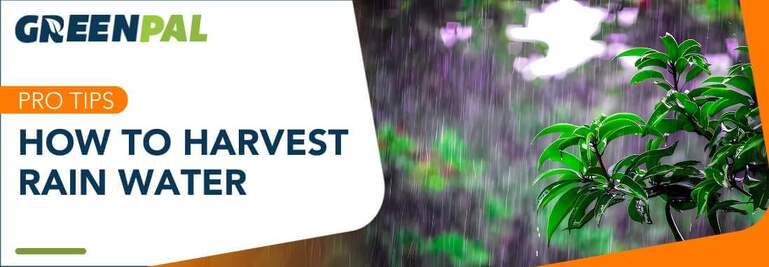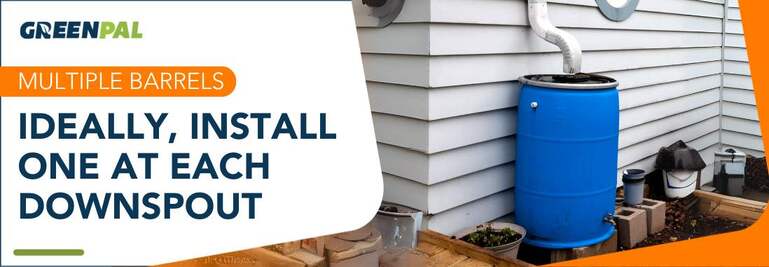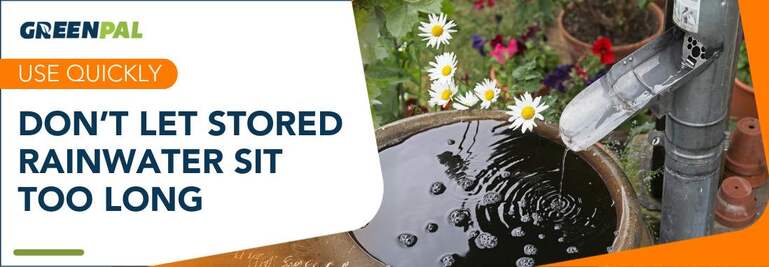How to Harvest Rain Water: 5 Pro Tips

Wondering how to harvest rainwater effectively?
In this guide, you will learn five tips for harvesting rainwater.
Throughout the United States, droughts are becoming a serious problem.
Here’s the deal, in California this year, a 7-year drought has finally come to a close
This is crazy but, in cities like Tampa local municipalities place water restrictions on how much homeowners can water their lawns.
And if that is the case in your town you will want to keep reading!
Why Should You Consider Collecting Rainwater?
Look, you may not be going through a drought yourself, but you can still help to conserve water without having to give up much for it.
This is where something like harvesting rainwater comes in.
To be fair, harvesting rainwater is not a new thing. It has existed, in one way or another for thousands of years. Yet, in our modern era having water available to us at the tap has caused many to forget about the benefits of harvesting rainwater.
For a homeowner, harvesting rainwater will not only help the environment, it can also help you save money. Rain is free, and you can use that rain to water your lawn or garden during times of dry and hot weather.
Just be sure to winterize your irrigation in time for winter to preserve your investment.
But enough talk, lets get to tip number 1!
5 Tips For Harvesting Rainwater
Harvesting Rainwater Tip #1
Make sure you have a roof that can be used to harvest water.
Here’s the deal, this one is critical. Some roofs are composed of lead-based paints, and that is the last thing that you want in your water. Even if it is just being used to water the lawn.
You want to be sure your roof is non-toxic. If your roof is made of steel sheets, well-fired glazed tiles, concrete, or composite tiles, then you should be fine to use your roof to collect rainwater. Just check to be sure.
In short, make sure that your roof is made of non-toxic material before harvesting your rainwater.
Harvesting Rainwater Tip #2
Make sure your gutters are draining properly.
Any dips or unhinged gutters may be pooling stagnant water. This can lead to mosquito breeding, or even worse it can lead to diseases proliferating in your rainwater collection.
Whether you plan on drinking it or not, you want to avoid pollutants in your water.
In short, before collecting water, make sure that your gutters are in order.
Harvesting Rainwater Tip #3
Clear your gutters of all debris.
Any debris will not only impact the quality of the water, it will impact how much water you actually get.
Most people don’t know this but, you can install a fireproof mesh over your gutters that will prevent any leaves or sticks from collecting in the gutter, blocking it.
In short, collecting rainwater will require you to keep the gutters clear.
Harvesting Rainwater Tip #4
Install a first-flush diverter on the pipe leading into your barrel.
This “first-flush” will divert the first bit of rainwater. This water will often have the most toxins in it. This device prevents most of the dirty water from getting into the barrel.
This is important as you don’t want any unwanted fungi or bacteria building up in the barrel. This can lead to issues with disease in the lawn or in your gardens.
In short, a first-flush device can help keep your water clean by flushing out the first bit of water each time it rains.

Harvesting Rainwater Tip #5
Where can you place the rain barrel?
You can place your rain barrel anywhere around the house! It would be best to have a barrel at every gutter outlet, but that may not be in your budget.
If you can only afford to install one or two barrels. Put them where they will have the least obstructions from the roof and where you think the most rain can collect.
One Last Thing About Collecting Rainwater
Remember, you need to use that water often and not let it sit for too long.
After each rain, check the levels and determine if you need to use any of it to keep the barrel from spilling over.
The Bottom Line on Harvesting Rainwater
Collecting rainwater is a sustainable irrigation practice which will help you cut down on your water use by making the best of a natural, and abundant resource.
With droughts on the rise in the US, collecting rainwater can be a game-changer. Harvesting rainwater is both environmentally friendly and cost-effective for homeowners.
Tip #1: Ensure your roof is non-toxic and suitable for rainwater collection.
Tip #2: Maintain properly draining gutters to prevent stagnant water and contaminants.
Tip #3: Keep gutters clear of debris to improve water quality and collection efficiency.
Tip #4: Install a first-flush diverter to remove toxins from initial rainwater.
Tip #5: Place rain barrels strategically to maximize rainwater collection.

Using rainwater on your lawn or garden can mean the difference between life and death in your lawn should a drought occur. Perhaps best of all, you will save money too! And I don’t know anyone that isn’t looking to save a little money.
If you need any help in your lawn or landscape. Reach out to the lawn care professionals at GreenPal who are always there to help you with all of your lawn care and landscaping needs.
From planning your landscape to making it happen you can count on the pros at GreenPal.





 Share
Share













